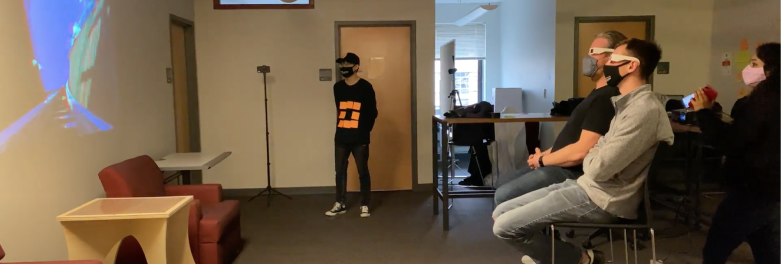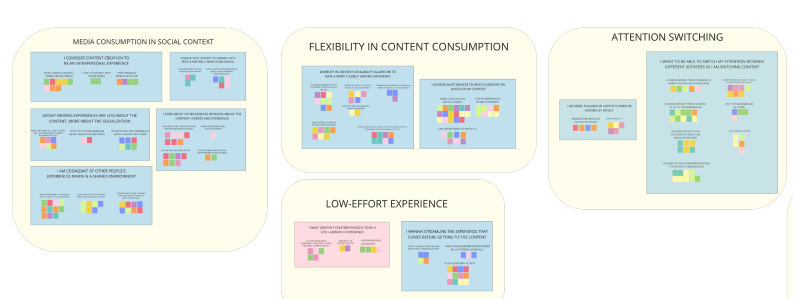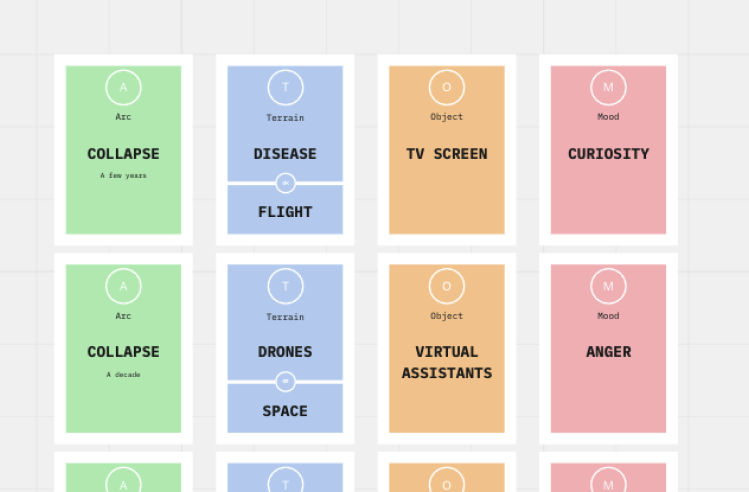- People want to have collective experiences when watching with other people
- People choose to watch TV because they can easily switch their attention to and from other tasks
- People want gratification from the TV content and not the process of obtaining it
- People want to use content to indulge in their emotions
Our initial research goal was to understand the current state of content consumption and what users consider to be the integral elements of the TV viewing experience.
- What do our users think TV is?
- What are users’ current digital content consumption habits and experiences?
- How do people use, consume and view TV in their daily life?
Keeping these questions in mind, we studied our users’ behaviors, observed their reactions to novel scenarios, and examined the potential user needs that are not currently being met. We realized that the lines between TV content and digital content has blurred, and that TV content now encompasses the bite-sized short multimedia clips accessible on everyday smartphones, as well as the video content available on streaming platforms and media outlets like YouTube. Consequently, we began by exploring the current state of digital content consumption and the digital content viewing experience. Using those findings, we then conducted a future-focused need-finding research to examine avenues in which the current state of digital TV could evolve to meet such needs.
- Affinity Diagramming
- Think Aloud Protocol
- Directed Storytelling
- Contextual Inquiry
- Experience Mapping
- Diary Study
- Conceptual Prototyping
- Bodystorming
- The Thing from the Future
- Wizard of Oz Techniques
CURRENT STATE

We began with a larger scale investigation to feel out the sheer scope of a project this size. A quickly constructed “pretotype” involving a TV that would follow a user’s eyeline as they completed tasks or shifted in their bed or couch and a 3D video accompanied by faking surround sound gave us our base impressions on how people instinctively interacted with novel technologies in television when not given discrete controls.

A member of our team wandered into the participants view wearing a square of post-its. When our participants didn’t notice the attention check, we could confirm satisfactory levels of immersion.
This supplemented with participant reports on viewing habits and preferences in a focused 60 minute contextual inquiry, and reported over a 7 day diary study period provided the foundation of our first affinity diagram,. Here, we collected notes and found patterns, overlapping feelings, frustrations, and surfacing wants and needs based on the current state of television.

FUTURE STATE
To supplement the research we had done on the current state of TV, we began looking towards forward with the future-thinking game The Thing From the Future, adapted for our purpose with cards dedicated to TV, digital media, and emerging technologies.

Adapted item cards to pivot the Situation Lab's Thing From the Future Game for our purposes - the TV (and Emerging Tech) Thing From the Future
User-generated solutions to the prompts gave us insight into what people envisioned for themselves in the future and unearthed wants and needs in a tech-driven future. Broadly a couple of these were:

Escapism

Nostalgia

Collective Experiences
